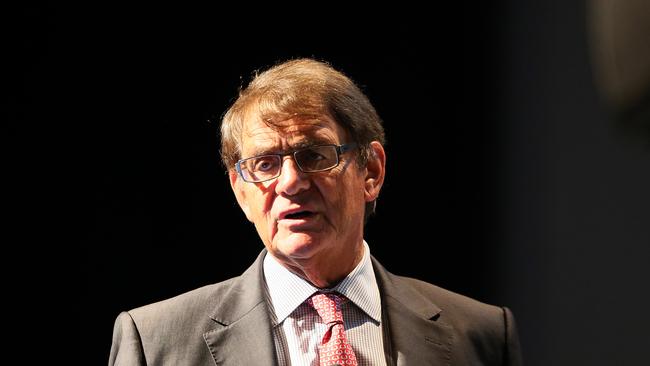China still key to our economic growth, says Westpac’s Bill Evans
The factors fuelling domestic economic growth may have shifted but one factor has remained constant: China.

Australia’s growth drivers may have shifted dramatically over the past five years but Westpac chief economist Bill Evans notes one constant: a reliance on China.
The dependence drives “huge uncertainty”, with the prospect of a sudden halt to the housing market’s momentum looming large.
In a note assessing the evolving risks and opportunities confronting the Australian economy, Mr Evans said a “remarkably stable” growth rate had belied the precarious transition from a reliance on mining and energy to a focus on education, tourism and housing.
In the process, the bulk of the nation’s growth has shifted from Western Australia and Queensland to the most populous eastern states of New South Wales and Victoria.
“Education exports, business services and tourism are the key drivers of this success,” Mr Evans said.
“Between 2007 and 2013, net services exports subtracted around 0.3 — 0.8ppts from GDP growth on average over most years. Since 2013, these sectors are responsible for adding 0.3 — 0.7ppts to growth.”
Housing has also played a major role, with NSW and Victoria the focal points of an unprecedented boom in high rise apartments.
But, again, Australia is hitching its wagon to one global power in the hunt for growth.
“Just as the mining and commodity cycles were heavily dependent on China, so are these latest sources of growth,” Mr Evans said.
“Growth in tourism and education is dominated by China. This partly reflects the sharp increase in China’s overall services trade deficit.
“At some point, the Chinese authorities, who appear to have stabilised last year’s spectacular near $US1 trillion loss in foreign reserves, may decide to slow this leakage.”
Tighter capital controls could quickly flow through to Australia’s flourishing housing construction industry, with the stunning expansion in high rises dotting inner Sydney and Melbourne under threat.
Concerns about the apartment market have been a consistent theme through the year, with the Reserve Bank tipping a cooldown and NAB last week detailing some worrying numbers on a potential glut of supply, among other significant warnings from economists.
Mr Evans echoed similar sentiments, noting reasons for worry were already popping up in Melbourne in particular.
“Local banks have stopped funding FIRB buyers, presenting risks to local developers who may have sold more than 50 per cent of their stock to these buyers,” he said.
“It is generally accepted that apartment buyers in the Melbourne CBD have incurred some capital losses, while Sydney purchasers are seeing their profits squeezed.
“These liquidity and capital loss prospects may discourage foreign buyers, with the result of sharply slowing the apartment construction cycle.”
Westpac has seen foreign banks look to plug the funding gap for offshore buyers in the local housing market, but the risk of an abrupt slowdown lingers.
“Overall, huge uncertainty prevails in this market, with possible outcomes ranging from ongoing spectacular momentum to a sudden liquidity driven slowdown,” he said.
“In those circumstances, one part of the recent boost to Australia’s growth story might fade quickly.”






To join the conversation, please log in. Don't have an account? Register
Join the conversation, you are commenting as Logout